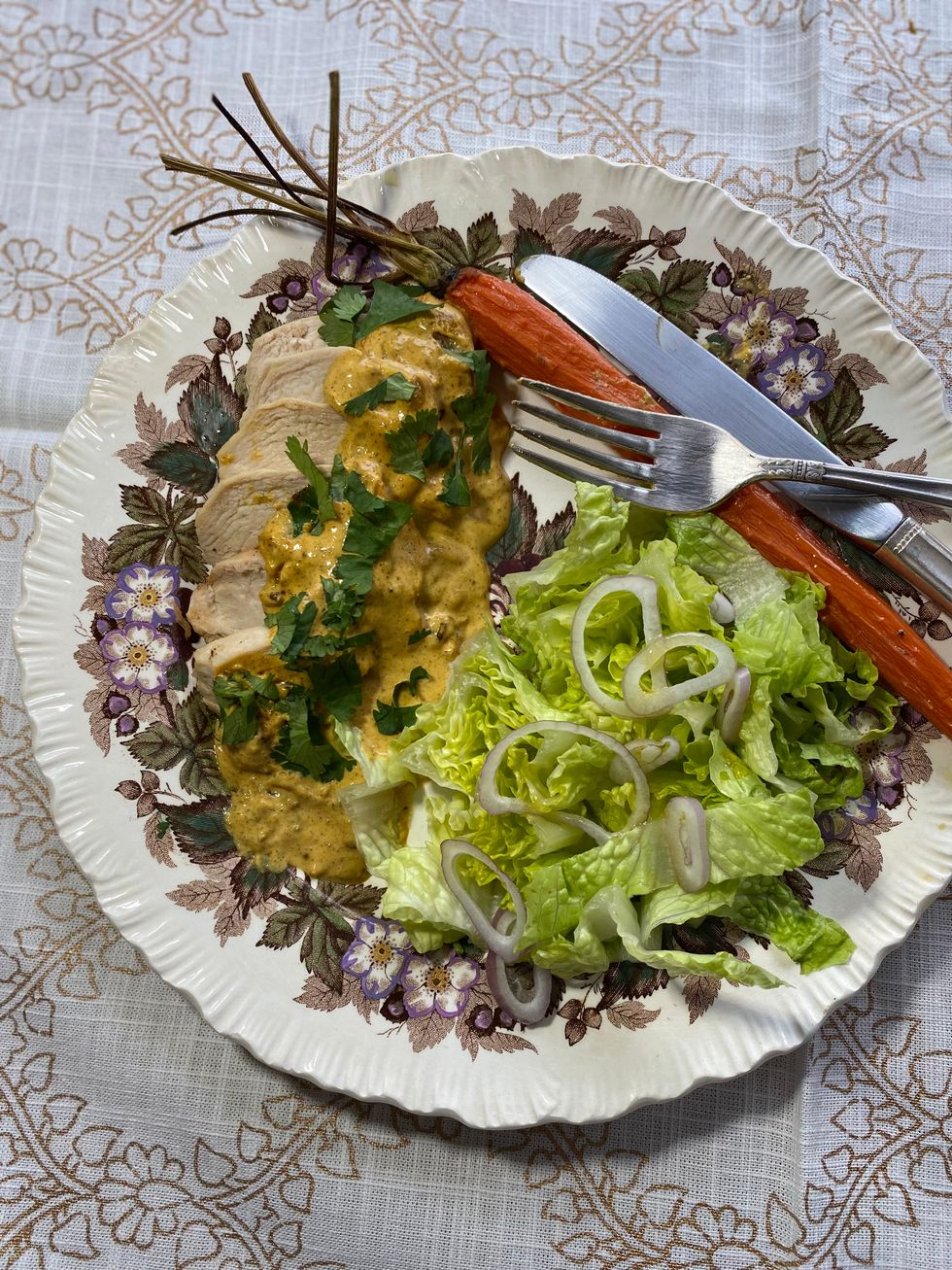Most Brits have at least heard of Coronation Chicken and have probably eaten it at least once. For those who haven’t, it’s kind of a curry-based cold chicken-with-sauce that was invented in 1953 for Queen Elizabeth’s coronation luncheon. It was created by garden writer Constance Spry and Cordon Bleu London instructor Rosemary Hume, and was officially known as Poulet Reine Elizabeth.
This year marks the queen’s 70th year on the throne. A Platinum Jubilee is being planned.
As far as I can tell this is the first regal celebration (since 1953, when Coronation Chicken was invented) when a bespoke recipe is being developed: Earlier this year, the famed Fortnum & Mason announced thatit’s having a Platinum Pudding Competition, which is in mid-bake right now.
On Feb. 21, the panel of eight judges selected five finalist recipes. From March 14 to 21, the baker/chefs will meet up in London at Fortnum & Mason to make their creation, just like on the Great British Baking Show.
Adding to the TV Cookoff Ambience: One of the judges for the Platinum Pudding Competition is GBBS judge Dame Mary Berry.
If you want to follow along with the excitement, you can go to www.fortnumandmason.com/platinum-pudding.
An essential question the website answers is one that perplexes many non-Brits: What exactly is a pudding?
So many kinds of pudding
In America, when we talk about pudding it usually means some type of custard.
The Fortnum & Mason pudding page explains that, “Although the term ‘pudding’ has become synonymous with dessert in Britain, not all puddings are desserts, while all desserts are puddings in the modern sense of the word.”
The page then goes on to explain the history of puddings and the differences between puddings: boiled and steamed; baked; bread; batter; milk; and “jellies” (which in the U.S. we would call gelatin or Jell-O).
For the Platinum Pudding, entries are expected to be sweet, not savory; easy enough that the average person can make them at home; attractive and delicious; and they should have a story or history that makes them more than a bunch of ingredients.
How to make Coronation Chicken
Returning to Coronation Chicken, a history of the recipe can be found at www.cordonbleu.edu/london/coronation-chicken/en. It doesn’t specify that curry was used in honor of the link between India and England, probably because India had earned independence six years earlier, in 1947. But despite any official link between the two countries, it does seem that curries make up a large part of the diet of many Brits, if BBC television programs can be believed.
I test cooked some Coronation Chicken this week and found it extremely scrumptious and hard to stop eating.
I ended up using a recipe from a cookbook by a famous South African restaurant (“A Week in the Kitchen”), which uses the curry sauce as a dressing on the side of sliced chicken breasts. Most recipes mix it all together in a kind of chicken salad.
I’ll warn that this recipe is hot and spicy; if you want it milder, leave out or decrease the chile powder. If you don’t have cumin, cardamom and turmeric in your spice collection, ignore them and/or increase the curry powder to compensate.
This dish is extremely fragrant, and will leave your entire home smelling like curry for about 18 hours.
The recipe calls for eight chicken breasts; you can make as much chicken as you want with no problem. I haven’t tried to do the math to decrease the sauce quantity.
Coronation Chicken
Adapted from “A Week in the Kitchen” by Karen Dudley
Serves eight
Eight boneless, skinless chicken breasts; salt and pepper to taste; olive oil; lemon juice
Two yellow onions, peeled and chopped; 2 tbsp. cooking oil; 4 tbsp. mild curry powder; 1 tsp. ground cumin; 1 tsp. turmeric; 1/2 tsp. chile powder; 1 cinnamon stick; 5 crushed cardamom pods (about a half teaspoon of powder); 1 bay leaf
4 tsp. tomato paste; 1/2 cup chicken stock; 2 tsp. sugar; salt and pepper to taste; 2/3 cup mayonnaise; 2/3 cup (150 grams) thick Greek yogurt; the juice of one fat lemon; 2 tbsp. chutney (you can use a winter compote of dried fruit or some marmalade instead)
Optional garnishes: toasted almond slivers; fresh coriander/cilantro
Preheat your oven to 325 degrees. Season the chicken breasts with olive oil, lemon juice and salt and pepper to taste. Bake for about a half hour, until they’re done. You can also poach the chicken in a bit of water, and then use the broth in your sauce.
Sauté the onions in the oil until they’re translucent, about 10 minutes on low to medium heat.
Add all the spices and cook at medium heat for a few minutes; then add the tomato paste, chicken stock, sugar and salt and pepper. Cook for about five minutes, until the flavors blend and the spices are no longer powdery.
Let the sauce cool. Let the chicken breasts cool (you don’t want to slice them while they’re hot or they’ll fall apart).
When the sauce is cool, add the mayonnaise and yogurt, lemon juice and chutney/compote/marmalade.
Arrange the chicken slices on each plate and add the finished sauce over half the meat. Garnish if you like.
I personally think roasted carrots and potatoes make a nice side, to help absorb the heat. Rice would work, too. Traditionally, Coronation Chicken is served with some kind of cold salad.










 "Cow," by Joelle Sander.Cornwall Library
"Cow," by Joelle Sander.Cornwall Library
 Lala TamarProvided
Lala TamarProvided




